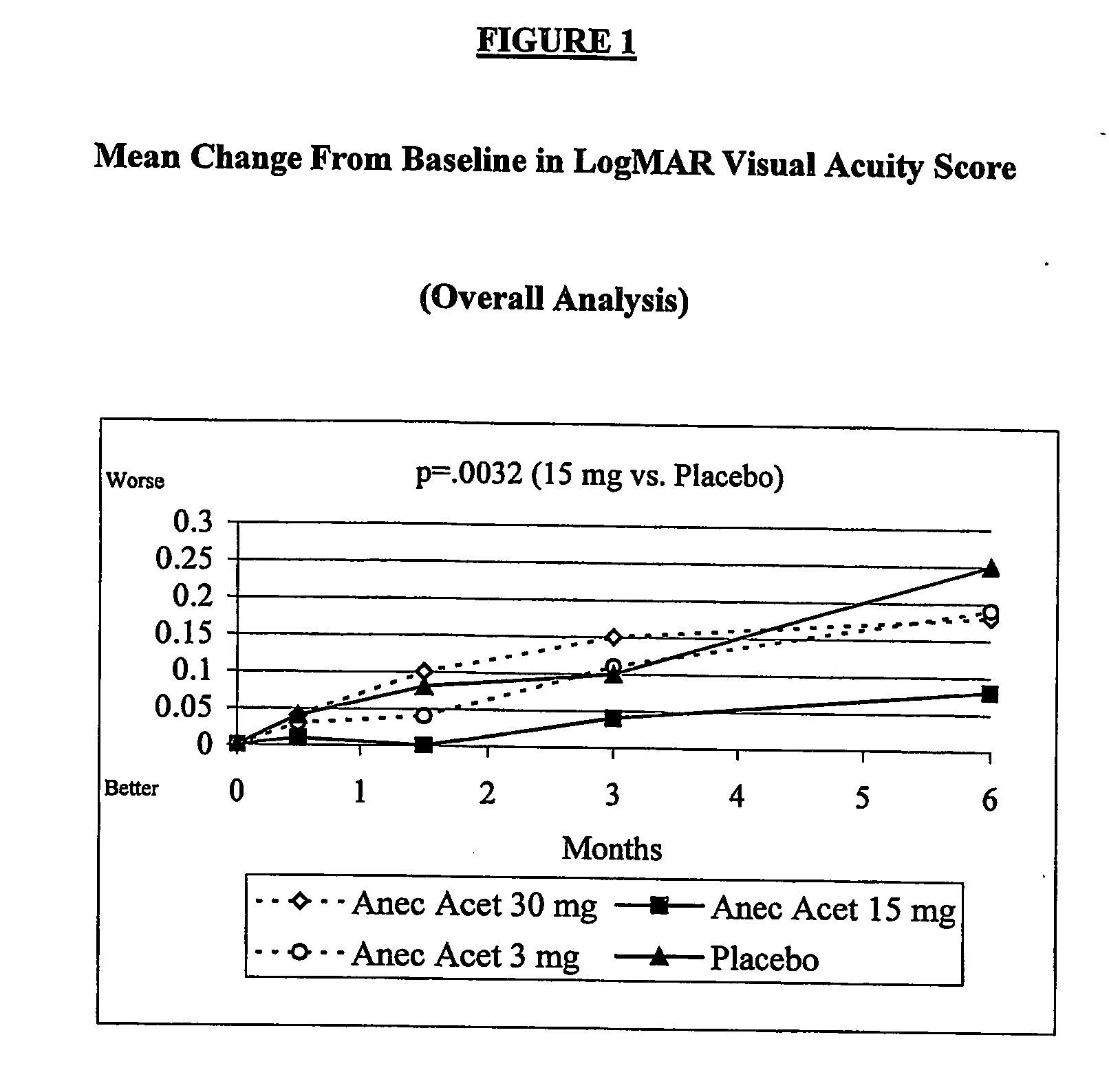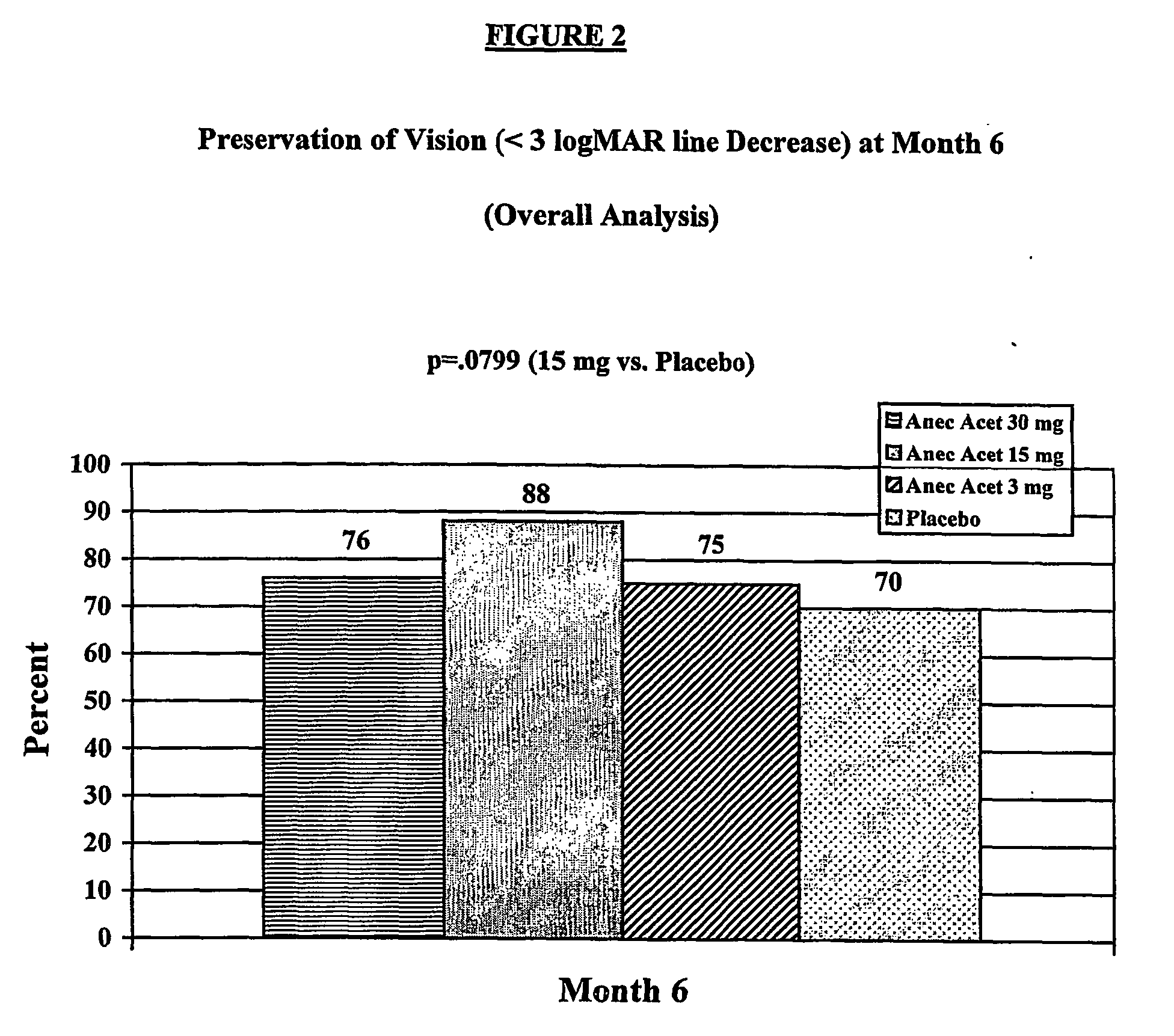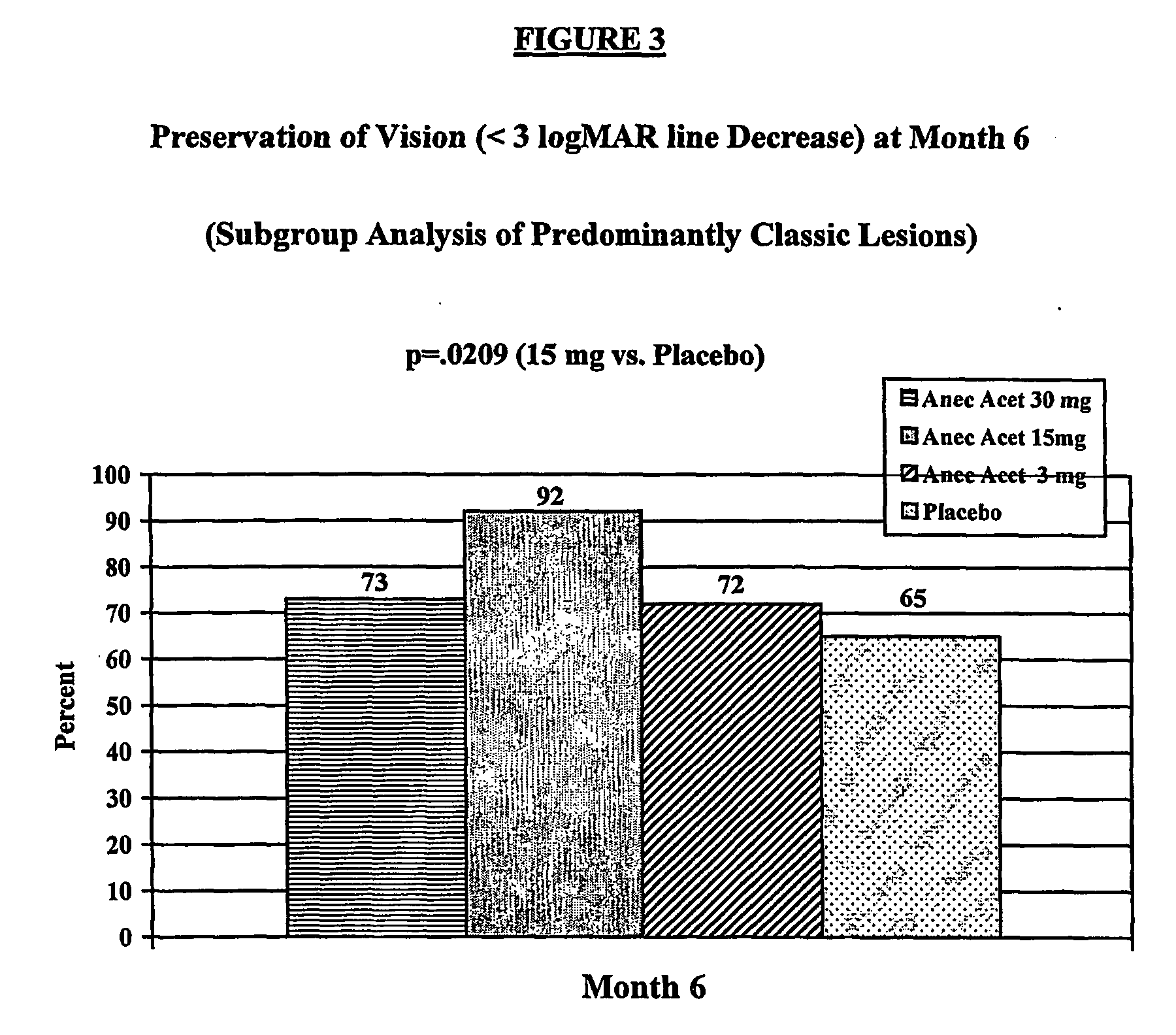Use of anecortave acetate for the protection of visual acuity in patients with age related macular degeneration
anecortave acetate and macular degeneration technology, applied in the direction of steroid, medical preparations, organic chemistry, etc., can solve the problems of delay, but not stop, loss of vision, and the effect of treatment options
- Summary
- Abstract
- Description
- Claims
- Application Information
AI Technical Summary
Benefits of technology
Problems solved by technology
Method used
Image
Examples
Embodiment Construction
[0015] Anecortave acetate (4,9(11)-pregnadien-17α,21-diol-3,20 dione-21 acetate) is being clinically evaluated as monotherapy to treat exudative subfoveal AMD in this ongoing multi-center trial. The results of an interim analysis of the first 6 months of clinical data on safety and efficacy following a single treatment are reported here.
[0016] This ongoing trial was initiated to compare the clinical efficacy of anecortave acetate versus placebo treatment for preservation (maintenance) of vision and inhibition of CNV lesion growth. Patients with a log MAR visual acuity of 0.3 (20 / 40 Snellen equivalent) to 1.2 (20 / 320 Snellen equivalent) and primary or recurrent subfoveal choroidal neovascularization (CNV) secondary to AMD with a lesion up to 30.48 mm2 (12 disc areas) in size were enrolled. Inclusion and exclusion criteria for this study are listed in Table 1. At Baseline and follow-up visits, best-corrected log MAR visual acuity was obtained on all patients using guidelines previous...
PUM
| Property | Measurement | Unit |
|---|---|---|
| surface area | aaaaa | aaaaa |
| size | aaaaa | aaaaa |
| surface areas | aaaaa | aaaaa |
Abstract
Description
Claims
Application Information
 Login to View More
Login to View More - R&D
- Intellectual Property
- Life Sciences
- Materials
- Tech Scout
- Unparalleled Data Quality
- Higher Quality Content
- 60% Fewer Hallucinations
Browse by: Latest US Patents, China's latest patents, Technical Efficacy Thesaurus, Application Domain, Technology Topic, Popular Technical Reports.
© 2025 PatSnap. All rights reserved.Legal|Privacy policy|Modern Slavery Act Transparency Statement|Sitemap|About US| Contact US: help@patsnap.com



